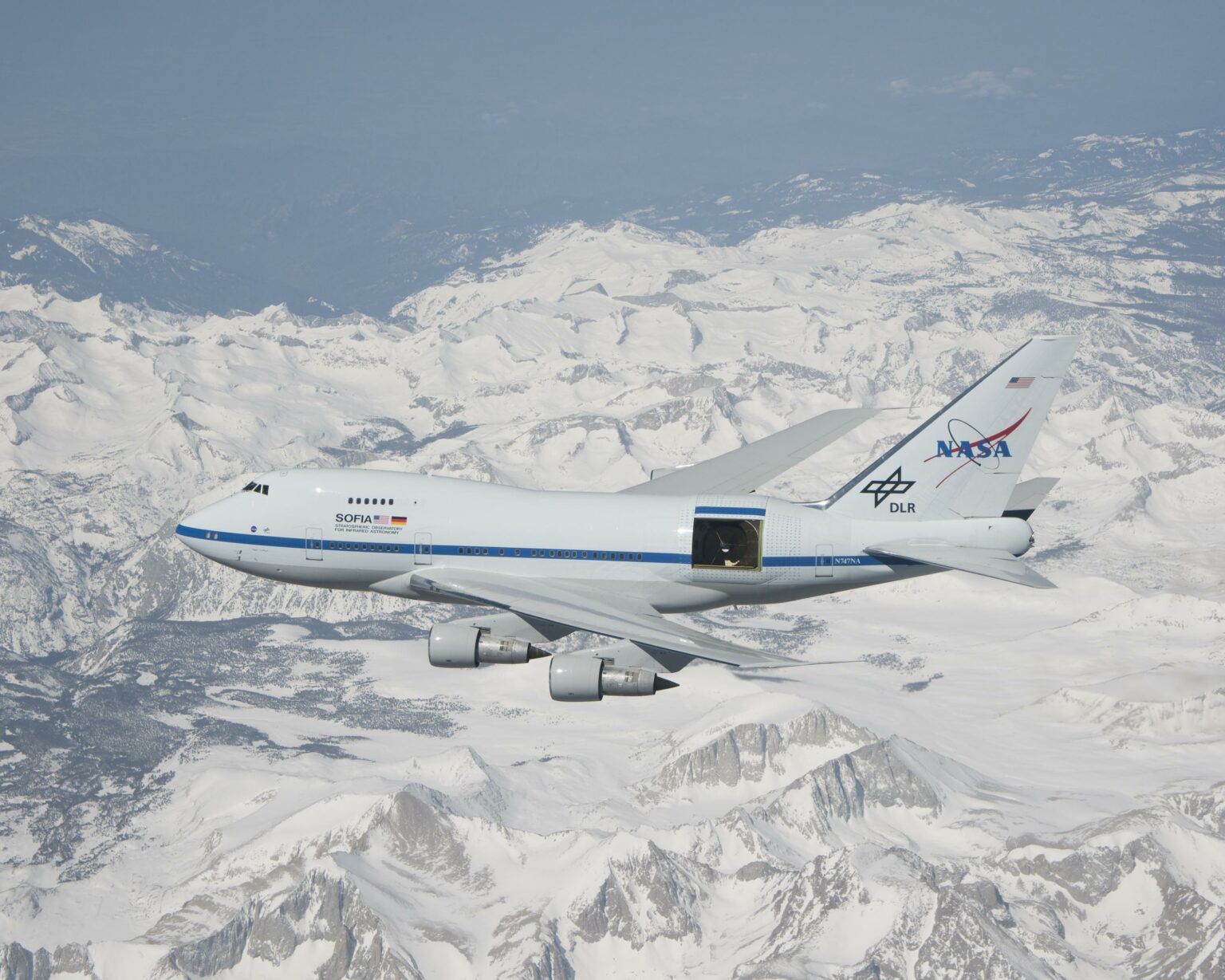NASA’s Stratospheric Observatory (SOFIA) is scheduled to make its last flight on September 28. Since 2014, with the help of it, many discoveries have been made in the near far space, but it is still decided to stop the program.

Last flight of the SOFIA Observatory
NASA’s SOFIA Stratospheric Observatory makes its last flight on September 28. Officially, it will remain in operation until the 30th, when the fiscal year ends in the United States, but in the last two days it no longer has flights.
The fact that the project, which has provided many important observations since 2014, will be closed has been known since the beginning of the year, when scientific recommendations for the next 10 years were published. The last big program that was implemented with the help of this telescope was mapping the sky of the Southern Hemisphere, during which the aircraft was damaged due to strong winds.
SOFIA is a Boeing 747SP aircraft, on board of which a reflector telescope with a mirror diameter of 2.7 meters is installed. It is capable of monitoring for up to 10 hours at an altitude of 11500 to 13700 m. Thanks to this, it manages to conduct research that is otherwise only available for orbital observatories.
The most important discoveries made by the Stratospheric Observatory
Thanks to its unique capabilities, SOFIA has made a lot of interesting observations over eight years of work. For example, in 2020, scientists working with it announced that they had found water ice on the sunlit surface of the Moon using spectroscopy. This discovery could be of great importance for future manned missions to our moon.
The telescope also studied oxygen in the upper layers of the Earth’s atmosphere. These studies have helped to understand how the energy exchange between the space and the surface takes place. Based on this, scientists have made important changes to climate models.
SOFIA also explored the magnetosphere of the Universe as part of the SALSA program. It has established that all galaxies have fields extending far beyond their limits. And those star systems that have recently merged, they are also very turbulent.
According to www.space.com
Follow us on Twitter to get the most interesting space news in time
https://twitter.com/ust_magazine

